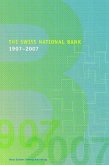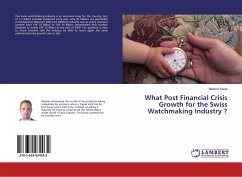The topic of the thesis is banks and the Swiss economy. It consists of four main parts which make empirical contributions to the fields of banking, productivity analysis, financial economics, macroeconomics and economic history. The first part describes the construction of a newly developed data set, containing balance sheets and profit & loss accounts of Swiss banks from 1906-2007. The second part is about banking intermediation efficiency in Switzerland. Banking efficiency is estimated utilizing stochastic frontier analysis. The results show that state owned cantonal banks and co-operatives are more stable in terms of efficiency than big universal banks. There is little variation in cost efficiency. Scale effects are present, while banks with market power do not seem to obstruct smaller banks. A risk measure based on the Basel II standardized approach is included to incorporate the cost of risk. The third part investigates Swiss banking crises and their effect on the Swiss economy. Banking crises are determined by estimating deviations from potential return on equity with Bayesian dynamic stochastic frontier analysis. Several periods of distress are revealed. The most prominent are the Great Depression, the mortgage crisis of the 1990s, the burst of the dot-com bubble and the onset of the sub-prime crisis in 2007. These are put in historical perspective. The deviations from potential output are included in a Bayesian dynamic factor model in order to generate an aggregated banking distress measure. To estimate the macroeconomic effects of banking crises this indicator is used in a time-varying coefficients Bayesian vector autoregression with sign restrictions identification setup. The results show that GDP growth, the banking sector and credit conditions responded strongly to banking shocks. The dependence of the Swiss economy on its banking industry is strongest during the Great Depression, weak in the mid 20th century and regains importance during the 1990s/2000s. Credit conditions relax earlier now than in the 1930s, while banks recover more quickly. The fourth part studies the reduction in macroeconomic volatility in Switzerland from 1949-2006 with respect to an abatement in economic shocks. The data for a set of variables are compared with the predictions from a dynamic stochastic general equilibrium model with financial frictions using a relative mean square approximation error. The hypothesis, that a large part of the reduction in macroeconomic volatility in the last 25-30 years could be the consequence of ¿good luck¿ in form of smaller shocks, cannot be rejected.








